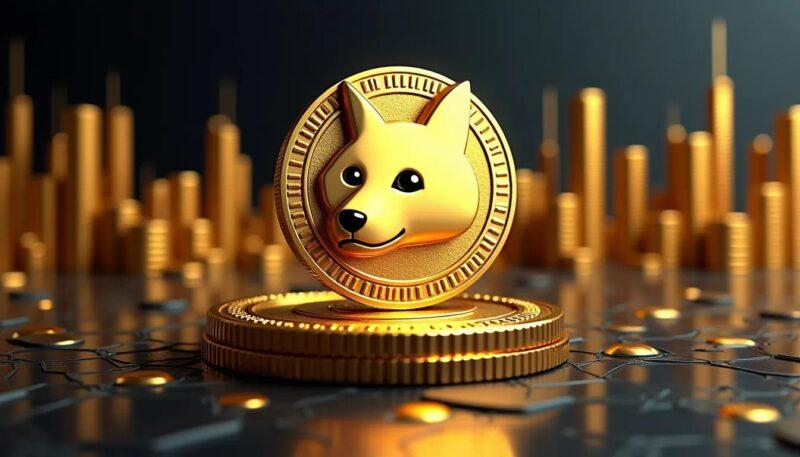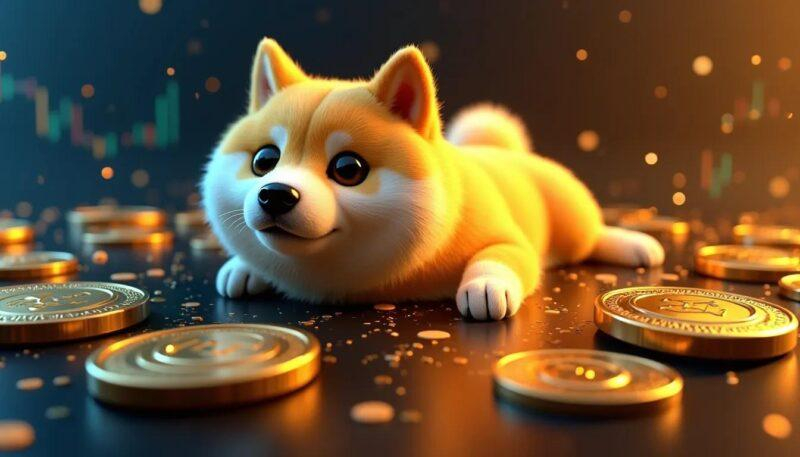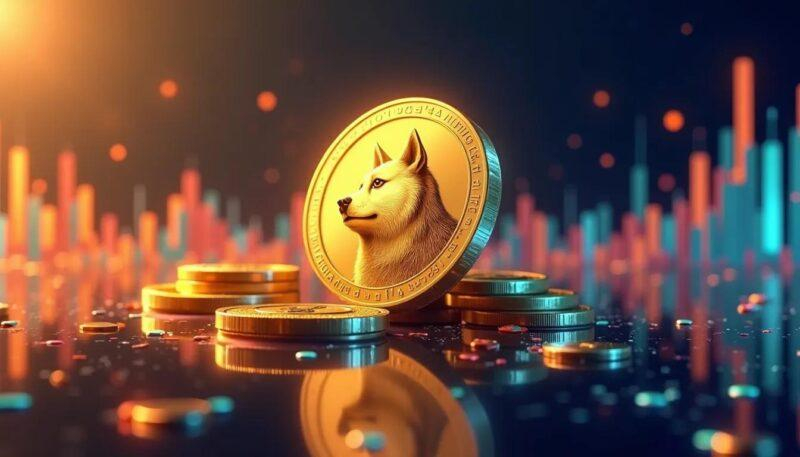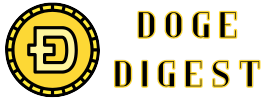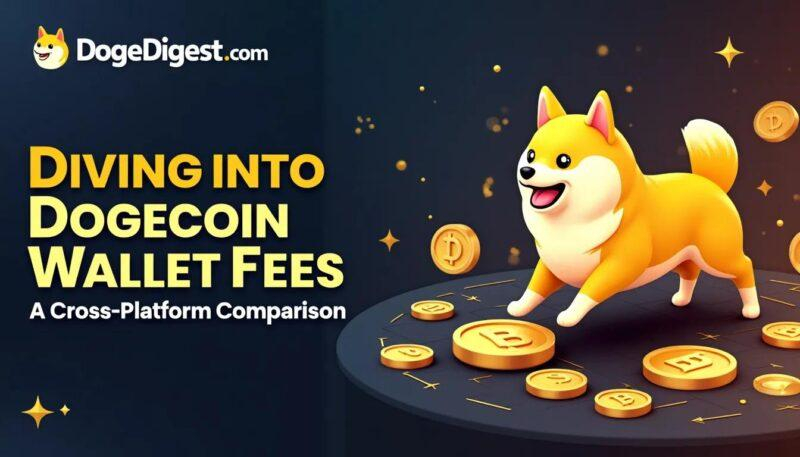In the vast and vibrant universe of cryptocurrency, Dogecoin and altcoins shimmer as intriguing constellations-each with its own origin story, community, and promise. Born from different motivations yet united by blockchain technology, these digital assets invite both curiosity and scrutiny. This article embarks on a balanced comparison overview, navigating the playful charm of Dogecoin alongside the diverse potential of altcoins. Whether you’re a seasoned investor or a casual observer, understanding their similarities and contrasts is key to making sense of an ever-evolving crypto landscape.
Understanding the Origins and Community Spirit Behind Dogecoin
Born out of a playful twist on the cryptocurrency craze, this digital coin was introduced as a lighthearted alternative to Bitcoin. Its mascot, a Shiba Inu dog from a popular internet meme, immediately set it apart from the serious reputation of most cryptocurrencies. This whimsical origin story wasn’t just a gimmick-it fostered a welcoming and accessible environment that attracted a diverse range of users, from complete beginners to seasoned crypto enthusiasts. Unlike many altcoins focused purely on technological innovation, the charm and humor behind its creation became a powerful tool for building an engaged community.
At the heart of this coin’s appeal lies an unusually strong community spirit. Members have consistently emphasized generosity and fun, often rallying around philanthropic causes and tipping culture online. This has cultivated an atmosphere where participation feels more social and rewarding beyond just financial gains. The grassroots enthusiasm fuels widespread adoption, with active forums, social media groups, and even real-world meetups. It’s a rare instance where shared culture and meme-driven identity translate into a cohesive network supporting each other’s growth and success.
Here’s a quick snapshot highlighting key factors that differentiate this coin’s community from others:
- Inclusivity: Open to newcomers with simplified entry points and active guidance.
- Philanthropy: Regular charitable events and fundraising drives.
- Memetic Engagement: Leveraging humor and memes to maintain excitement.
- Active Social Presence: Strong engagement across various platforms, fostering real-time connections.
| Community Trait | Impact |
|---|---|
| Playful Identity | Welcomes diverse users, reduces intimidation |
| Philanthropy | Builds positive real-world influence |
| Memes & Humor | Boosts user engagement and retention |
| Social Connectivity | Encourages community-driven growth |
Evaluating Technological Innovations and Use Cases of Leading Altcoins
Altcoins have emerged as laboratories of innovation within the broader cryptocurrency ecosystem. Unlike Bitcoin’s primary focus on secure peer-to-peer transactions, many altcoins experiment with advanced consensus algorithms such as Proof of Stake (PoS), Delegated Proof of Stake (DPoS), and Directed Acyclic Graphs (DAG). These technologies aim to enhance scalability, reduce energy consumption, and improve transaction throughput. For instance, Ethereum’s pioneering smart contract functionality revolutionized programmable money, while Solana’s high throughput capacity delivers near-instantaneous transaction speeds, broadening the scope of blockchain applications.
Use cases reflect this technological diversity. Privacy-centric coins like Monero and Zcash target anonymity, appealing to users who prioritize confidentiality in their transactions. Meanwhile, platform-focused altcoins such as Cardano and Polkadot introduce interoperability solutions to connect disparate blockchains, fostering an interconnected digital asset universe. Many altcoins are powering decentralized finance (DeFi), non-fungible tokens (NFTs), and even decentralized autonomous organizations (DAOs), underscoring their adaptability beyond simple currency mechanics.
| Altcoin | Technological Innovation | Primary Use Case |
|---|---|---|
| Ethereum (ETH) | Smart Contracts / PoS | DeFi & dApps |
| Polkadot (DOT) | Blockchain Interoperability | Cross-chain Connectivity |
| Monero (XMR) | Privacy Protocols | Anonymous Transactions |
| Solana (SOL) | High Throughput PoS | Fast Payments & dApps |
In contrast, Dogecoin stands out for its simplicity and community-driven ethos rather than groundbreaking tech. Built originally as a fun, meme-inspired alternative, it relies on the well-established Scrypt algorithm and Proof of Work consensus, which trades off high scalability for robust security and decentralization. While Dogecoin lacks complex smart contracts or interoperability layers, its widespread adoption for micro-tipping and charitable donations highlights how technological sophistication isn’t the sole driver of a coin’s utility or cultural impact.
Assessing Market Volatility and Investment Risks Across Altcoins
When diving into the realm of altcoins, understanding the ebb and flow of market volatility becomes crucial. Unlike traditional assets, altcoins showcase an often unpredictable price behavior that can fluctuate wildly within short time frames. This dynamic nature is partly fueled by their smaller market capitalizations, speculative investor base, and relative novelty. Investors must brace for rapid price swings that can signal both exciting opportunities and potent threats.
Risk assessment should focus on multiple factors: liquidity, trading volume, project fundamentals, and the coin’s community strength. For instance, altcoins with low liquidity may experience exaggerated price movements due to thin order books. Here are some key risk considerations:
- Market Sentiment: How news and social media sway investor confidence.
- Regulatory Environment: Potential impacts of legal restrictions or bans.
- Technology Risks: Vulnerabilities in project code or network security.
- Developer Activity: Ongoing commitment to improvements and updates.
| Altcoin Category | Typical Volatility | Primary Risk |
|---|---|---|
| Memecoins (e.g. Dogecoin) | High | Market hype and sentiment swings |
| Utility Tokens | Moderate | Platform adoption rates |
| DeFi Coins | Very High | Smart contract vulnerabilities |
Comparing Transaction Speeds, Fees, and Scalability Factors
When diving into the world of cryptocurrencies, understanding the nuances of transaction speeds is crucial. Dogecoin, originally created as a playful alternative to Bitcoin, boasts a block time of just 1 minute, which significantly accelerates transaction confirmations compared to many altcoins. This swift validation makes Dogecoin particularly appealing for everyday micro-transactions. However, some altcoins like Ethereum prioritize complex smart contract operations, which can slow down the average transaction speed due to network congestion and higher computational demands.
Fees have become a deciding factor for users and traders alike. Dogecoin’s low transaction fees often stay a fraction of a cent, making it one of the most cost-effective choices for transferring value. In contrast, certain altcoins with higher network activity, such as Ethereum during peak times, experience skyrocketing gas fees, sometimes deterring smaller transactions. Meanwhile, newer altcoins are experimenting with innovative fee models-like deflationary tokens that burn fees or those using layer-2 solutions-to maintain affordability without sacrificing security.
| Cryptocurrency | Avg. Transaction Speed | Typical Fee Range | Scalability Approach |
|---|---|---|---|
| Dogecoin | 1 min | $0.0001 – $0.001 | Proof of Work, Simple UTXO |
| Ethereum | 13-15 secs | $2 – $50* | Proof of Stake + Layer 2 |
| Cardano | 20 secs | $0.20 – $0.50 | Proof of Stake, Ouroboros |
| Solana | 400 ms | Less than $0.01 | Proof of History + PoS |
*Fees fluctuate based on network demand.
Scalability remains a moving target for many cryptocurrencies. Dogecoin’s relatively straightforward architecture ensures stable scalability under common transaction volumes, but it lacks the advanced sharding or layer-2 features seen in newer altcoins. Ethereum’s transition to Proof of Stake and its embrace of layer-2 scaling solutions reflect a proactive approach to accommodating millions of users. Meanwhile, emerging altcoins like Solana leverage unique consensus mechanisms such as Proof of History to achieve ultra-fast throughput and low latency, aiming to redefine how blockchain networks manage scalability without compromising decentralization.
Strategic Recommendations for Diversifying Your Crypto Portfolio
Balancing your crypto portfolio goes beyond simply mixing popular coins; it’s about understanding the unique risk and reward profiles each asset brings. Dogecoin, for instance, is heavily influenced by community hype and media trends, offering potential for short-term growth but with higher volatility. To mitigate this, pairing Dogecoin with more stable altcoins that have robust ecosystems and clear use cases can create a buffer against sudden market swings.
When diversifying, consider blending assets based on distinct technological niches and market capitalization. Here are key factors to evaluate:
- Market liquidity and trading volume
- Developer activity and innovation pace
- Adoption rates and real-world applications
- Community engagement and governance models
Below is a concise comparison to help visualize diversification strategies between Dogecoin and various altcoins:
| Aspect | Dogecoin | Altcoins (Example: Cardano, Polkadot) |
|---|---|---|
| Risk Profile | High volatility | Moderate, tech-driven |
| Utility | Primarily transactional/tipping | Smart contracts, DeFi, interoperability |
| Community | Strong and meme-driven | Developer-focused, gradual growth |
| Growth Potential | Speculative spikes | Long-term scalability |
Q&A
Q&A: Dogecoin and Altcoins – A Balanced Comparison Overview
Q1: What exactly is Dogecoin, and how did it begin?
Dogecoin started as a playful alternative to Bitcoin in 2013, inspired by the popular “Doge” internet meme featuring a Shiba Inu dog. Originally intended as a joke, it gained unexpected popularity, becoming a widely recognized cryptocurrency with a strong and enthusiastic community.
Q2: How do altcoins differ from Dogecoin?
Altcoins refer to any cryptocurrencies other than Bitcoin. Dogecoin itself is an altcoin, but when people mention altcoins, they’re usually referring to a broad spectrum of cryptocurrencies like Ethereum, Ripple, Cardano, and many others-each with distinct technologies, purposes, and ecosystems. Dogecoin is unique in its origin and culture, while other altcoins often aim at solving specific technical challenges or expanding blockchain functionality.
Q3: In terms of technology, how advanced is Dogecoin compared to other altcoins?
Dogecoin’s technology is relatively simple and based on Litecoin’s codebase. It supports fast and low-cost transactions but lacks some advanced features found in newer altcoins, such as smart contracts or scalability enhancements. Other altcoins often push technological boundaries, introducing complex protocols to improve security, speed, or versatility.
Q4: What role does community play for Dogecoin and altcoins?
Community is critical for both Dogecoin and other altcoins, but Dogecoin’s community is especially notable for its lighthearted and charitable spirit. It has staged fundraising events and supported various social causes, reinforcing its identity beyond just a digital currency. While other altcoins also foster strong communities, theirs often focus more on development progress, partnerships, and adoption efforts.
Q5: How do market performance and investment potential compare between Dogecoin and other altcoins?
Dogecoin has experienced significant price surges driven largely by social media hype and celebrity endorsements. However, its value can be volatile and somewhat speculative. Other altcoins might offer different risk profiles-some backed by solid technological improvements and real-world applications, potentially appealing to investors with longer-term perspectives. Balancing risk and research is essential regardless of the coin.
Q6: What are the practical uses of Dogecoin versus other altcoins?
Dogecoin is primarily used for tipping, microtransactions, and as a gateway for new crypto enthusiasts due to its ease of use and low fees. Other altcoins can serve broader purposes-such as Ethereum’s platform for decentralized applications, or privacy-focused coins designed for anonymous transactions-making them versatile beyond simple currency transfers.
Q7: Should newbies consider investing in Dogecoin or other altcoins?
For beginners, Dogecoin’s community-driven nature and accessibility make it an inviting introduction to cryptocurrencies. However, it’s vital to understand that all cryptocurrencies carry risks. Exploring a mix of altcoins with different utilities, supported by thorough research and consideration of one’s risk tolerance, is a balanced approach for newcomers.
Q8: What’s the future outlook for Dogecoin compared to other altcoins?
Dogecoin’s future largely depends on community engagement and broader market trends. While it may continue to serve as a popular “fun” crypto, other altcoins might evolve technologically, offering innovative solutions that could shape mainstream blockchain adoption. Together, they represent a diverse ecosystem where humor meets innovation, each playing a unique role.
This Q&A aims to provide a balanced, creative, and neutral look at Dogecoin and the altcoin landscape, helping readers navigate the often colorful world of cryptocurrency with clarity.
Insights and Conclusions
In the colorful world of digital currencies, Dogecoin and altcoins each hold unique places on the spectrum of innovation and community spirit. While Dogecoin charms with its origins as a meme and its vibrant, loyal following, the broader altcoin market showcases a diverse array of technologies and use cases pushing the boundaries of blockchain potential. Understanding their differences-and similarities-allows investors and enthusiasts alike to navigate this evolving landscape with a clearer perspective. Ultimately, whether you’re drawn to Dogecoin’s playful energy or the technical ambitions of other altcoins, a balanced view helps illuminate the multifaceted story of cryptocurrency’s unfolding future.
